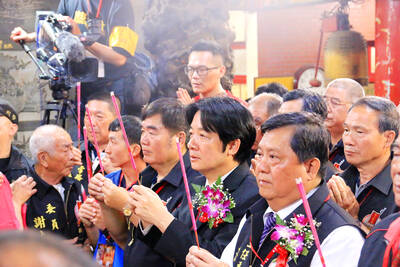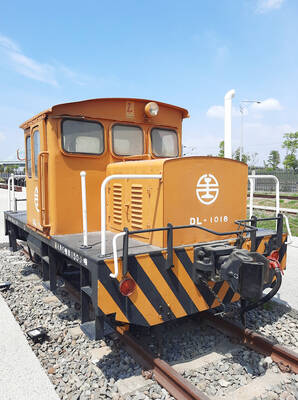It’s usually a bad sign when I take my family out and all three are in tears by the end of the day. We were at Ocean Park, the Hong Kong theme park/zoo that draws big crowds to gasp at wildlife and scream on rides. We started gently, being charmed by giant pandas and a comical sea lion show, and having a go on little bumper boats, before taking a spectacular cable car up the headland to the fantastic coral reef aquarium. The floodgates opened at the dolphin show, with my wife Jane in happy tears at the beauty of the creatures, who illustrated a commentary about ecological harmony between man, beast and planet by doing somersaults for fish.
Then Eddie, seven, asked to try a roller-coaster for the first time. He was tall enough and old enough, the signs said, but we skipped the loop-the-loop ride and opted for the harmless-looking (on the map) Mine Train. Ten seconds in, rattling up the chain, he wanted to get off. When the g-force kicked in on the first big dip, he really wanted to get off. I explained, calmly, while being whizzed, white-knuckled, in circles round the steel track (on the edge of a cliff) that that wasn’t possible and, look, there were only two more dips to go ...
Panic over, as Ed’s brain processed his body’s reactions, we decided to calm down on the log flume. Or, as we later realized from the map, the Raging River ride. As we queued, happy, soaking wet youths giggled on their way out. We floated gently round the track, forewarning our sons of the slide and splash that awaited us at the end of the ride. Only the slide turned out to be twice as long as we expected, long enough for Jane and I to wonder, as we clung to a boy each, how much longer it would take until splash-down.
In my arms, Finlay, five, shrieked in genuine, abject terror. Safely on dry land, we broke a family rule and bought the cheesy picture taken by the automatic camera, so the boys in years to come can wave it in front of us and say: “See what you did to me.” What a fantastic day.
Look up any guide to Hong Kong and you might be forgiven for thinking the only thing to do there is shop. New malls crop up daily, it seems, and when you’re done bagging designer labels there are bargains in the markets to be had. But clothes shopping is just no fun with young kids in tow.
So, when our expat friend Kenny invited me and my family to spend our summer holiday there, we had to think twice. Then a colleague came back enthusing about a walking holiday there, proving that you could exercise more than your credit card. Thinking back to my previous Hong Kong visit 25 years ago, and my wife Jane to hers 15 years ago, we each recalled an excitement about the city, an exotic mix of East and West. And now there’s Disneyland too ...
The Peak on Hong Kong island is a good place to get your bearings. A tram takes you up from Central business district so steeply that your rucksack slides down the floor to the back of the carriage. At the top, once you’ve retrieved your bag you emerge to a new shopping mall.
Head 45m up a path past the shops, and there’s a stunning view: a harbor teeming with boats large and small, fringed by a forest of skyscrapers and hemmed in by lush, green mountains. Plunge down again and you enter a city in perpetual motion by a dizzying variety of means. In two weeks Eddie and Finlay notched up more than a dozen different forms of transport, from rickety old trams to superfast jetfoils.
One of their favorites was the Ngong Ping 360 cable car on Lantau, the largest of Hong Kong’s archipelago of 260 islands. If you’re lucky you’ll get one of the Crystal Cabin cars with a glass floor, so vertigo-suffering Dad can watch his sons sprawl flat to look at sampan fishermen hundreds of meters below, as you rise up to a giant bronze statue of Buddha.
From there, we took a minibus down to the fishing village of Tai O. Sprawling shacks perched on stilts above a river, and stalls sold live fish and shrimps from glass tanks. Strings of dried swim bladders (prized for stews and soups) hung from shop rafters at prices up to an incredible US$5,160 apiece.
Taking a circular route back to our ride home, we passed the long, golden sands of Cheung Sha beach. If only we’d brought our swimming costumes that day, we’d have joined the handful of Hong Kongers splashing about. They were watched over by a team of yellow-clad lifeguards and a couple of elderly cleaners patrolling the beach in wide-brimmed hats.
Still, the scene provided a fitting moment of enlightenment under the gaze of the big Buddha. It was our summer holiday, so how about some bucket and spade fun alongside the city break? If you can have a walking holiday in Hong Kong, why not a beach one?
We took a ferry to Cheung Chau, only 20 minutes from Central. It’s one of the islands populated by commuters who choose to live away from the tower blocks in low-rise homes, and also popular with day-trippers.
Stepping off the boat was like landing in a busy Greek harbor. Fishing boats bobbed meters from seafood restaurants along the quay and cyclists on hired bikes weaved in and out of a relaxed crowd perusing the menus.
After a spectacular squid lunch, we walked a few hundred meters across the center of the island to a great little beach, thronged with families. Like every public beach, we were to discover, it had free, very clean changing facilities and showers, clearly marked lifeguard zones and a reassuring shark net.
We had a great time splashing about and making sand castles. It could have been the Med but for the occasional Cantonese public-address announcement and the sight of Hong Kong’s skyscrapers across the water.
We went in July, so it was baking hot (37˚C) and a couple of hours was all we could take. To be honest, I’d go in spring or fall, particularly October and November, when the humidity eases off, if I were you.
On the hippy-vibed Lamma Island, we took in a family beach (in the shadow of a power station) followed by an hour’s hike across the island, through woods teeming with butterflies. But for a wilder day out, we headed east beyond Kowloon’s high-rises to Sai Kung Country Park, and joined a bunch of expats on a hired party junk. It motored out through islets and channels for an hour until it found a quiet cove then dropped anchor, and we splashed in the South China Sea while the crew fixed us food and drink all day. Very civilized.
Our last beach day started with an exhilarating bus ride over the Dragon’s Back ridge to Shek O, on the easternmost tip of Hong Kong island itself. This was a proper seaside place, with bucket and spade shops and laid-back cafes. The beach was buzzing with crowds of teenagers chasing each other excitedly.
It looked great, but when the boys and I dashed into the sea we found a filthy mess of plastic flotsam, drink bottles and food wrappers. Plastic bags wrapped around our legs like seaweed. Maybe we were unlucky, and the currents happened to be against us that day. Otherwise, the authorities need to get cleaning.
There’s something mesmeric about a port in full flow. The iconic old green and white Star ferries still ply between Hong Kong island and Tsim Sha Tsui, in Kowloon, as they have for more than a century. Catch one at 8pm and free with your journey you get a spectacular choreographed light show played out by the main harborside skyscrapers.
Hong Kong Disneyland opened in 2005 on Lantau and has been criticized for being too small, but we found it perfect for boys our age. We stayed at the art-deco style Hollywood Hotel, splashed with Goofy in its swimming pool then nipped to the next door Disneyland Hotel to meet Mickey and Minnie Mouse, Tigger and Piglet over dinner.
Next day, in the actual park, apart from the Chinese “cast members” there wasn’t a particularly oriental tinge to the fun available. We cruised a piranha-infested jungle river, zapped laser guns with Buzz Lightyear and flew up and down on Dumbo’s back. Hawaii’s Lilo and Stitch were the big stars on show, rather than China’s own Mulan and her dragon buddy. When the temperature got too hot we headed indoors for a Lion King show, or got sprayed with hoses during Mickey’s energetic Waterworks Parade. To top off the day, we gathered by Sleeping Beauty’s castle to watch a spectacular firework display. And when the magic was all over we headed back to the city in a Mickey Mouse train — a proper train, that is, with mouse ear-shaped windows.
So, we did it, a family holiday in Hong Kong: buckets and spades chopsticks and pandas Lilo and Stitch bright lights, big city. What more could a young boy want?

The Democratic Progressive Party (DPP), Chinese Nationalist Party (KMT), and the country’s other political groups dare not offend religious groups, says Chen Lih-ming (陳立民), founder of the Taiwan Anti-Religion Alliance (台灣反宗教者聯盟). “It’s the same in other democracies, of course, but because political struggles in Taiwan are extraordinarily fierce, you’ll see candidates visiting several temples each day ahead of elections. That adds impetus to religion here,” says the retired college lecturer. In Japan’s most recent election, the Liberal Democratic Party lost many votes because of its ties to the Unification Church (“the Moonies”). Chen contrasts the progress made by anti-religion movements in

Taiwan doesn’t have a lot of railways, but its network has plenty of history. The government-owned entity that last year became the Taiwan Railway Corp (TRC) has been operating trains since 1891. During the 1895-1945 period of Japanese rule, the colonial government made huge investments in rail infrastructure. The northern port city of Keelung was connected to Kaohsiung in the south. New lines appeared in Pingtung, Yilan and the Hualien-Taitung region. Railway enthusiasts exploring Taiwan will find plenty to amuse themselves. Taipei will soon gain its second rail-themed museum. Elsewhere there’s a number of endearing branch lines and rolling-stock collections, some

Last week the State Department made several small changes to its Web information on Taiwan. First, it removed a statement saying that the US “does not support Taiwan independence.” The current statement now reads: “We oppose any unilateral changes to the status quo from either side. We expect cross-strait differences to be resolved by peaceful means, free from coercion, in a manner acceptable to the people on both sides of the Strait.” In 2022 the administration of Joe Biden also removed that verbiage, but after a month of pressure from the People’s Republic of China (PRC), reinstated it. The American

Chinese Nationalist Party (KMT) legislative caucus convener Fu Kun-chi (傅?萁) and some in the deep blue camp seem determined to ensure many of the recall campaigns against their lawmakers succeed. Widely known as the “King of Hualien,” Fu also appears to have become the king of the KMT. In theory, Legislative Speaker Han Kuo-yu (韓國瑜) outranks him, but Han is supposed to be even-handed in negotiations between party caucuses — the Democratic Progressive Party (DPP) says he is not — and Fu has been outright ignoring Han. Party Chairman Eric Chu (朱立倫) isn’t taking the lead on anything while Fu